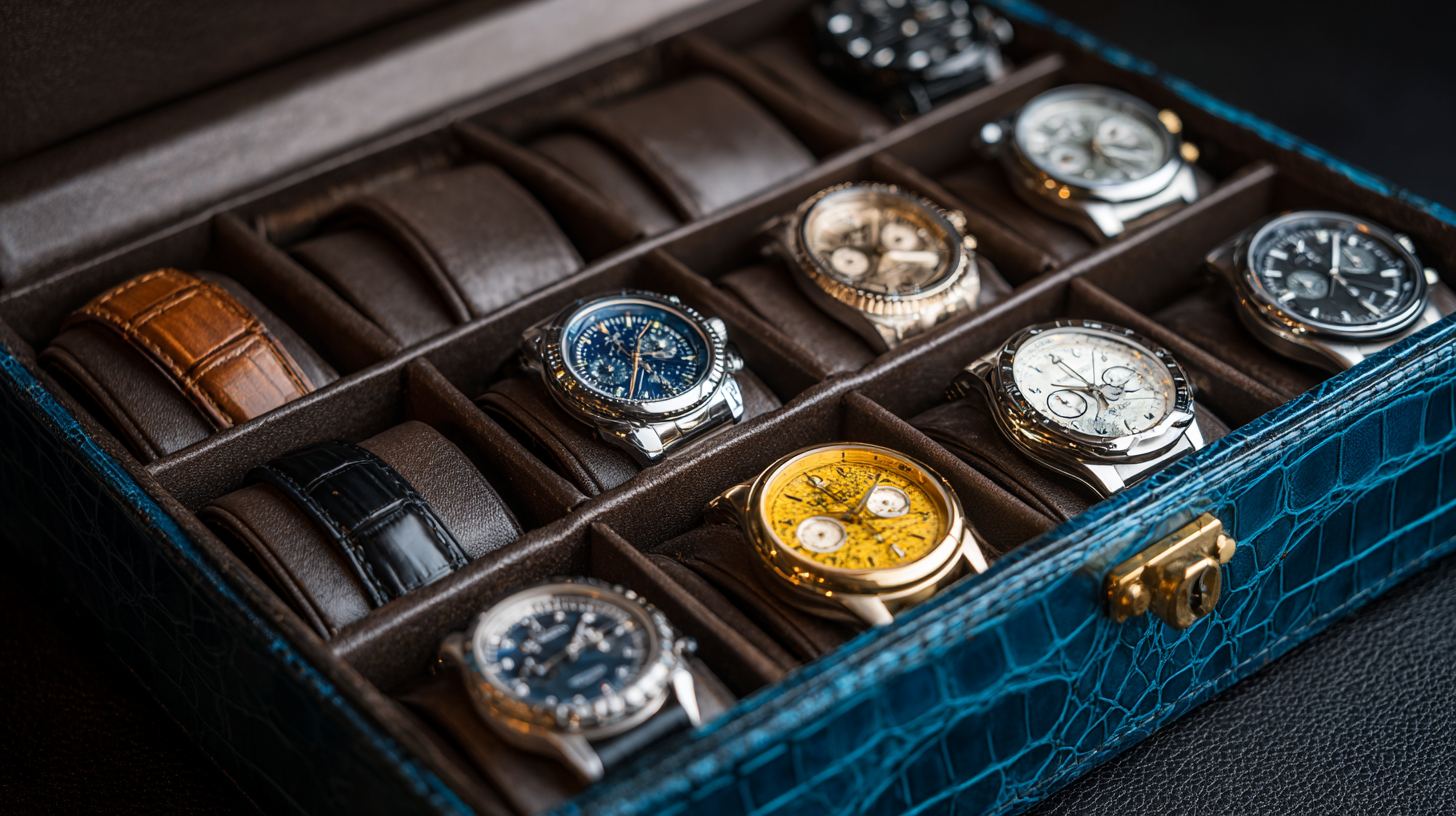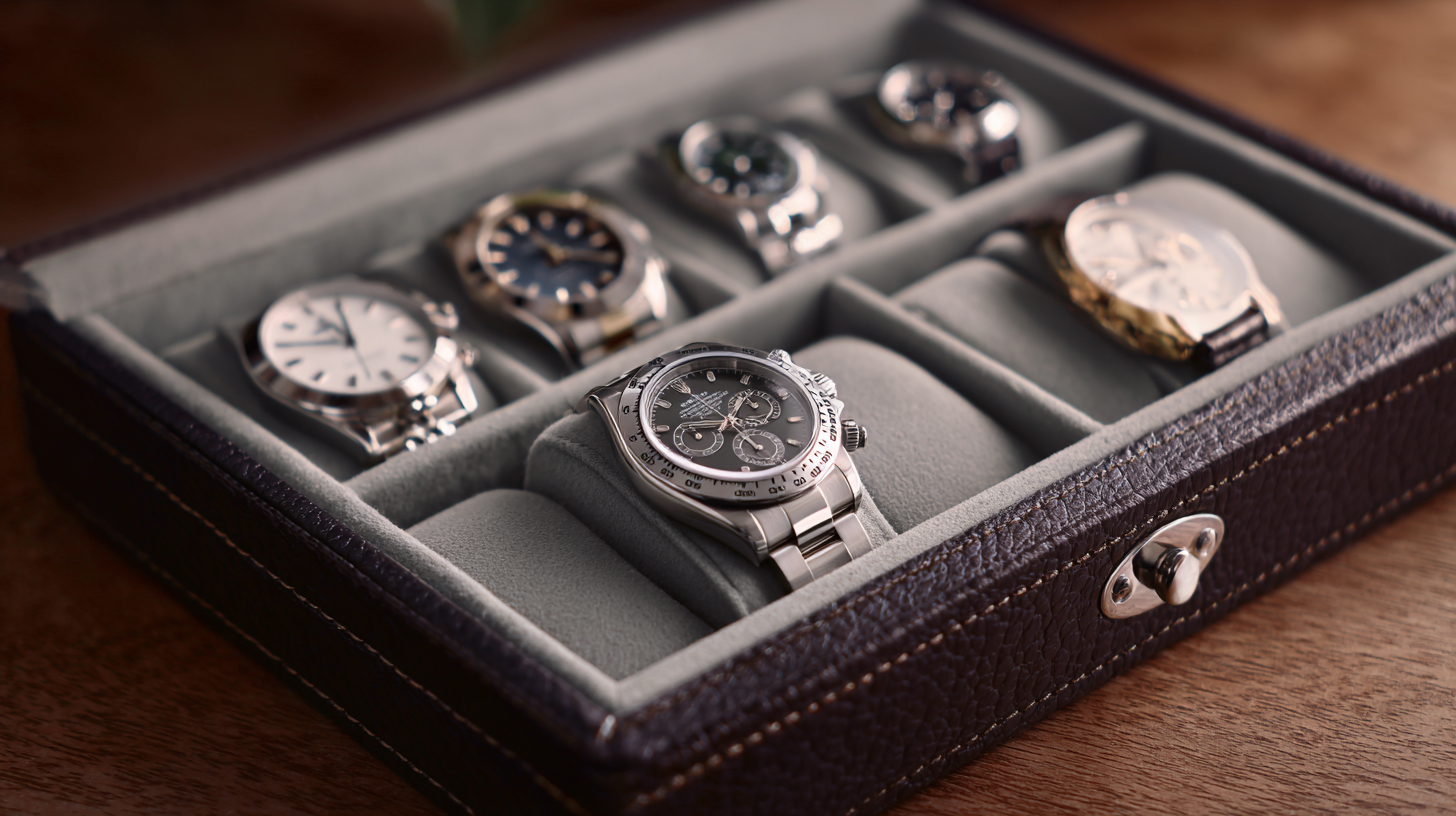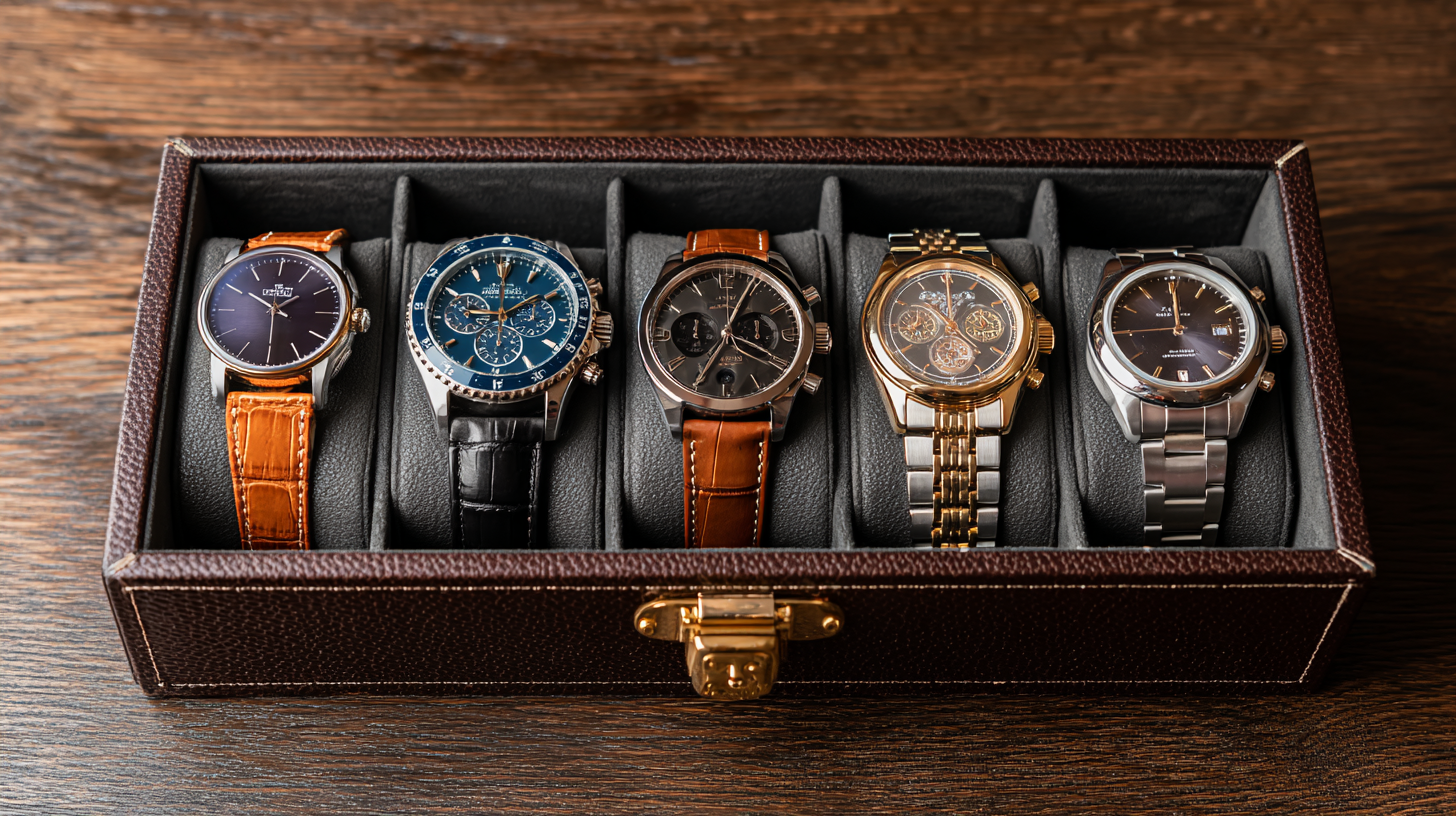When it comes to selecting a timepiece, the watch case is one of the most critical elements that significantly influences both functionality and style. According to a recent market analysis by Mordor Intelligence, the global watch market is expected to reach USD 64 billion by 2025, with a notable shift in consumer preferences towards quality and durability. As enthusiasts and casual wearers alike seek watches that not only complement their lifestyle but also endure the test of time, understanding the intricacies of watch cases becomes essential.

From materials such as stainless steel and titanium to the importance of water resistance and scratch resistance, a well-chosen watch case can elevate a timepiece from mere accessory to a lasting investment. This guide aims to provide a comprehensive overview of the factors that should influence your selection process, ensuring that you choose a watch case that meets your needs for quality and durability.
When selecting a watch, the case material plays a crucial role in both quality and durability. The most common materials include stainless steel, titanium, gold, and ceramics.
 Stainless steel is a favorite due to its resistance to corrosion and scratches, making it ideal for daily wear. It offers a classic aesthetic that complements both casual and formal attire. However, it can be heavier compared to other materials, which some individuals may find uncomfortable.
Stainless steel is a favorite due to its resistance to corrosion and scratches, making it ideal for daily wear. It offers a classic aesthetic that complements both casual and formal attire. However, it can be heavier compared to other materials, which some individuals may find uncomfortable.
On the other hand, titanium is a fantastic option for those seeking lightweight durability. Known for its strength, titanium is less prone to scratches than stainless steel, making it perfect for adventurous lifestyles. Gold adds a touch of luxury and elegance, but it tends to be softer and more susceptible to damage. Lastly, ceramic watch cases are gaining popularity for their scratch resistance and modern look. They are lightweight and can come in various colors, offering both style and functionality. Each material has its advantages and disadvantages, so understanding these is essential for selecting the perfect watch case that suits your lifestyle and preferences.
When it comes to selecting the perfect watch case, thickness plays a pivotal role in both durability and style. A study by the Federation of the Swiss Watch Industry indicates that watches with a case thickness ranging from 8mm to 12mm strike an ideal balance between robustness and elegance. Thicker cases, often exceeding 12mm, are typically associated with sports or dive watches, designed to withstand harsher conditions, while slimmer cases are favored for dress watches, emphasizing sophistication and subtlety.
Moreover, the material of the case interacts significantly with thickness to enhance durability. According to a report by the International Watch & Jewelry Guild, stainless steel cases offer remarkable resilience, particularly in thicker designs, while titanium cases are lauded for their lightweight yet sturdy characteristics. A common standard is that a thicker titanium case, around 10mm, can provide a similar level of durability as a thicker stainless steel case, but with less overall weight, making it a popular choice among avid watch enthusiasts who prioritize both performance and comfort.
When it comes to selecting the perfect watch case, quality craftsmanship plays a pivotal role in ensuring durability and style. A well-crafted watch case not only enhances the aesthetic appeal but also provides essential protection for the intricate movements within. Look for materials such as stainless steel or ceramic, which are known for their resilience. Examine the finish; a smooth, polished surface often indicates meticulous attention to detail. Additionally, consider the design elements, such as water and dust resistance, which contribute significantly to the longevity of your watch.
Tips:

When selecting the perfect watch case, understanding water resistance ratings is crucial. Water resistance is not just a marketing term; it signifies how well a watch can withstand exposure to moisture and water pressure. Common ratings include 30 meters, 50 meters, and 100 meters, each indicating different levels of protection. A watch rated to 30 meters is suitable for splashes and brief immersion in water but should not be worn while swimming. In contrast, a 100-meter rating allows for aquatic activities like swimming and snorkeling but may not be appropriate for deep-sea diving.
Moreover, it's essential to consider the lifestyle and activities associated with the watch's use. If you enjoy water sports or frequently engage in outdoor adventures, opting for a watch with a higher water resistance rating is advisable. Additionally, factors such as the type of seals and materials used in the case can influence durability. A watch with a screw-down crown and reinforced caseback enhances integrity and seals against water entry, providing peace of mind for wearers. By prioritizing water resistance in your selection process, you ensure your watch remains a reliable companion, no matter where your lifestyle takes you.
When selecting a watch case, the shape is a critical factor that merges both aesthetic appeal and functional requirements. Round cases are the most traditional and universally appealing, offering versatility for both casual and formal settings. This classic shape pairs well with various strap styles, making it an easy choice for those who value adaptability in their timepieces. However, square and rectangular cases cater to those seeking a more modern or unique look, often associated with vintage styles. These shapes can accentuate a wrist's natural lines and add an element of individuality to your collection.
Beyond aesthetics, considering the functional characteristics of different case shapes is essential. For instance, larger cases usually provide better visibility, making them ideal for those who prefer a bold statement watch. Conversely, smaller, more delicate shapes may suit individuals with smaller wrists or those who prioritize subtle elegance. Additionally, specific shapes can enhance durability; for example, cases with rounded edges are less prone to chipping and damage compared to sharper angles. Ultimately, the right watch case shape should reflect your personal style while meeting your daily wear needs, ensuring both beauty and functionality harmoniously coexist.






